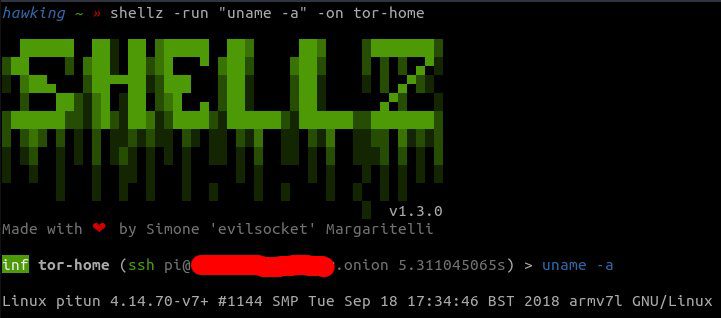If you want to downgrade to Ooly sshv1 (ip ssh version 1) the software will be upgraded/donwgraded from 1.99/2.0 1.5. If you want to go back to version 1.99 of. Download mac os x lion. SSHv1 had several iterations. Each iteration fixed certain security issues, but the protocol itself is vulnerable to several attacks. It uses RSA to encrypt 32 bytes of session key. It uses both the server's key and the host key; as in it RSA encrypts the session key twice. To SSH into your host, go to your terminal/command prompt. Navigate to the folder of all the certificates and ssh in using the idrsa certificate. $ ssh -i idrsa root@. At this point, the SSH extension has connected to your Raspberry Pi and is asking you to verify that the host key The SSH extension is designed to be secure, and because of this goal, it needs to identify that the computer you're trying to connect to is actually the computer you expect. To make this job easier, the computers generate a long.
One of the advantages of writingbooks is that you must double-check everything you thought you knew about a topic. PuTTY is probably the most widely deployed SSH client in the world. I’ve used it for years. It’s good software. (I also use the OpenSSH client, of course.)
To my surprise, PuTTY accepts both version 1 and 2 of the SSH protocol. It prefers version 2, but will accept 1.



Version 1 of the SSH protocol has irremediable problems. If a client accepts SSHv1, an attacker can intercept a new SSH connection and force it to downgrade to SSHv1. He can inject arbitrary commands into the SSHv1 stream. These problems have been known since 1998. Increases in computing power have made executing these attacks much simpler.
Wd software mac download taking too long to download. Worst of all, Ettercap can decode SSHv1 in real time. If Wireshark cannot decode SSH now, I suspect it will soon.

Ssh V1 And V2
In my mind, this puts SSHv1 into the same category as Telnet and unencrypted read-write SNMP; stuff that Just Should Not Be On My Network.
I absolutely understand why PuTTY supports SSHv1 by default. The generous people who spend their free time writing PuTTY aren’t interested in supporting folks who can’t be bothered to read the instructions. I might make the same decision in their place.
And yes, host key verification helps eliminate MITM attacks. But do your users really verify host keys? Really and truly? The PuTTY FAQ lists “How do I turn off the annoying host key verification prompt?” as a question. As a sysadmin, I translate this as “yours users don’t verify host keys, and mine don’t either.”
There’s no reason for anyone who actually reads this blog to routinely permit SSHv1, and the appearance of security is worse than no security. I encourage you to disable SSHv1 by default in your and your users’ clients. Users can override the default on a host-by-host basis, but at least they must make the conscious effort. They’ll probably ask you for help. This will help you find lingering SSHv1 servers. If you have some embedded device that only speaks SSHv1, well, you have a job to do. That job should include replacing that device or yelling at the vendor.
How do you disable SSHv1 in PuTTY? Open PuTTY. On the left side, go to Connection->SSH. Select “2 only.” On the left side, select Session (at the top). Highlight “Default Settings.” Click Save. PuTTY saves its configuration in the registry, so you can export this setting and apply it to your client PCs through whatever method you use.
The most annoying part of this change is that PuTTY’s default settings do not propagate to all of the previously saved sessions. R software download for mac. You must update them by hand or recreate them. I suspect that you could use some sort of script to update your saved sessions from your registry, but I can’t find such a thing. (This would be a great add-on tool for some Windows programmer looking for a way to contribute to the community.)
I will continue to highly recommend PuTTY to my Windows-based friends, with a note on how to disable SSHv1. As a lowly user who has no right to complain and who doesn’t have to listen to users whinge, though, I’d like to say to the PuTTY folks: researchers broke SSHv1 thirteen years ago. It’s time to stop accepting it by default.
Cisco Ssh Version 2
Stalk me on social media